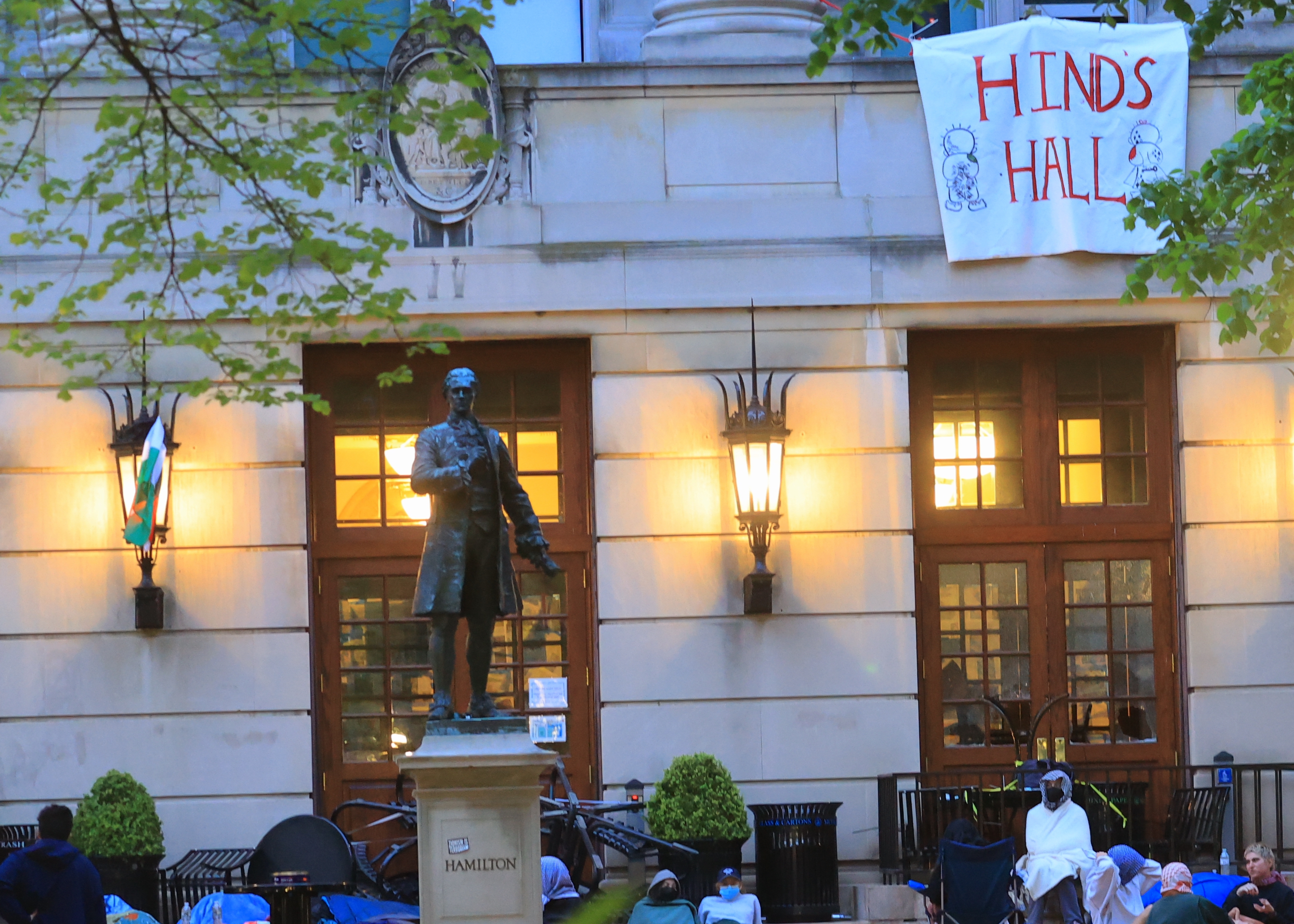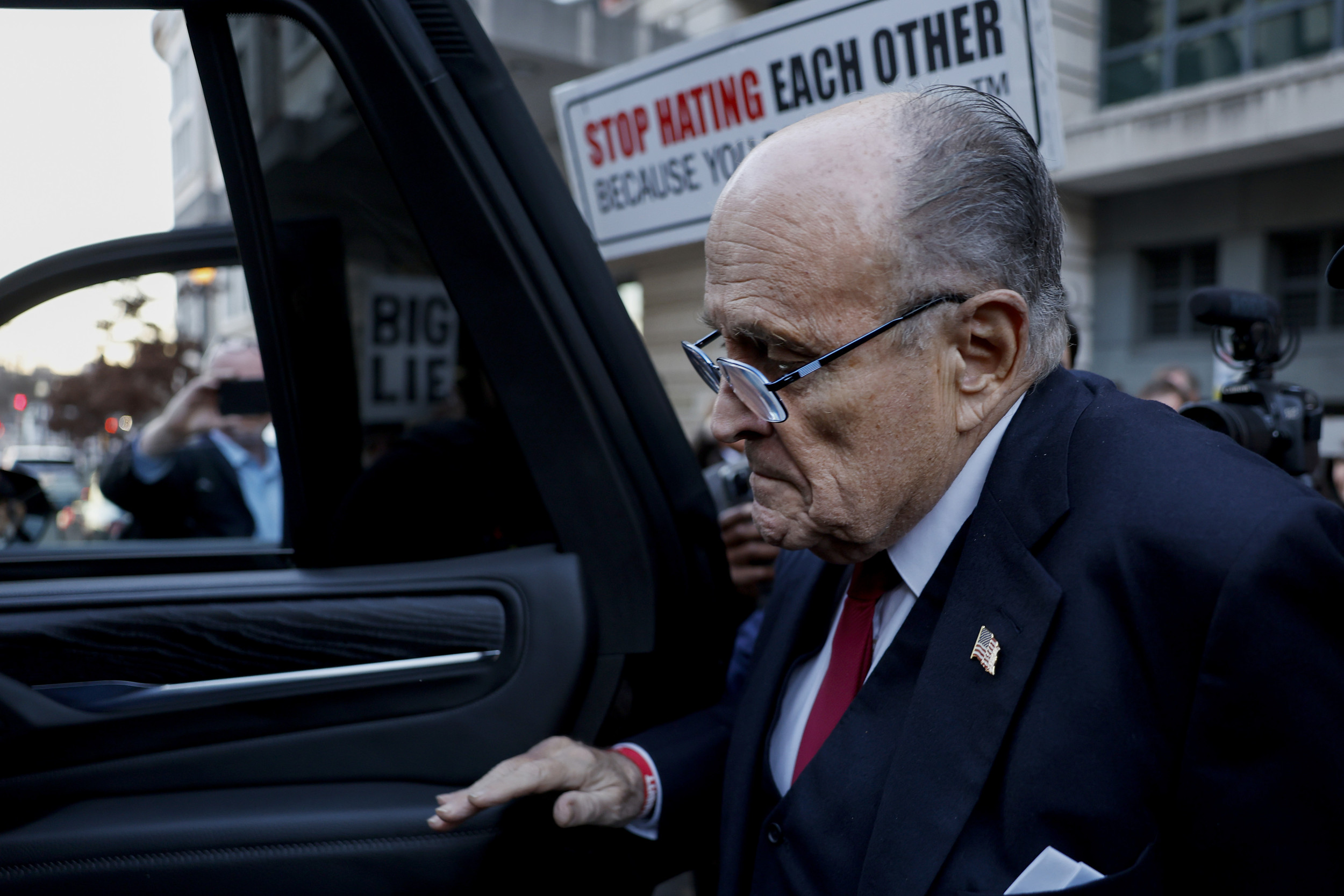
Recently, an attack on a Muhammad cartoon contest held in Garland, Texas, was foiled by local police, leaving two gunmen dead.
The event was organized by Pamela Geller, a self-appointed "expert" on Islamic terrorism and jihad, who makes a lucrative living pandering Islamophobic clichés that many commentators have analogized to hate speech.
While a number of Geller's trenchant discourses on Islam have been taken up by writers, one of her statements declaring that Judeo-Christian culture is superior to Islam because "Islam does not allow humor" appears to have fallen on deaf ears.
To point out that humor has thrived in Islamic lands for centuries would be painfully obvious for those who have studied the basics of world history. Yet it seems critical to do just that at this particular juncture.
Comic strips have been a staple of Arab culture since the early 20th century, and today a thriving community of Muslim cartoonists living across the world regularly comment on political and cultural events, often with daring intelligence and raw wit.
Some even answered Geller's call to draw Muhammad, putting a lighthearted spin on the sordid affair. Others have mocked her virulently anti-Muslim New York City subway ads by launching their own "Islamic Frittata Campaign," jokingly warning that hug-wielding "Muslims Are Coming!"
Over the past year, cartoonists across the Middle East have critiqued ISIS with equal amounts of ferocity and fearlessness. From Jordan to Iran, they frequently lambast ISIS—referring to it through its acronym Daesh, which is related to the pejorative Arabic term meaning "to tread under foot"—as destructive of Islam and the world's cultural heritage, as the growling lapdog of various superpowers, as the ultimate devil and grim reaper of Iraq and as an Oscar-winning sensation obsessed with bloody forms of self-promotion (Figure 1).
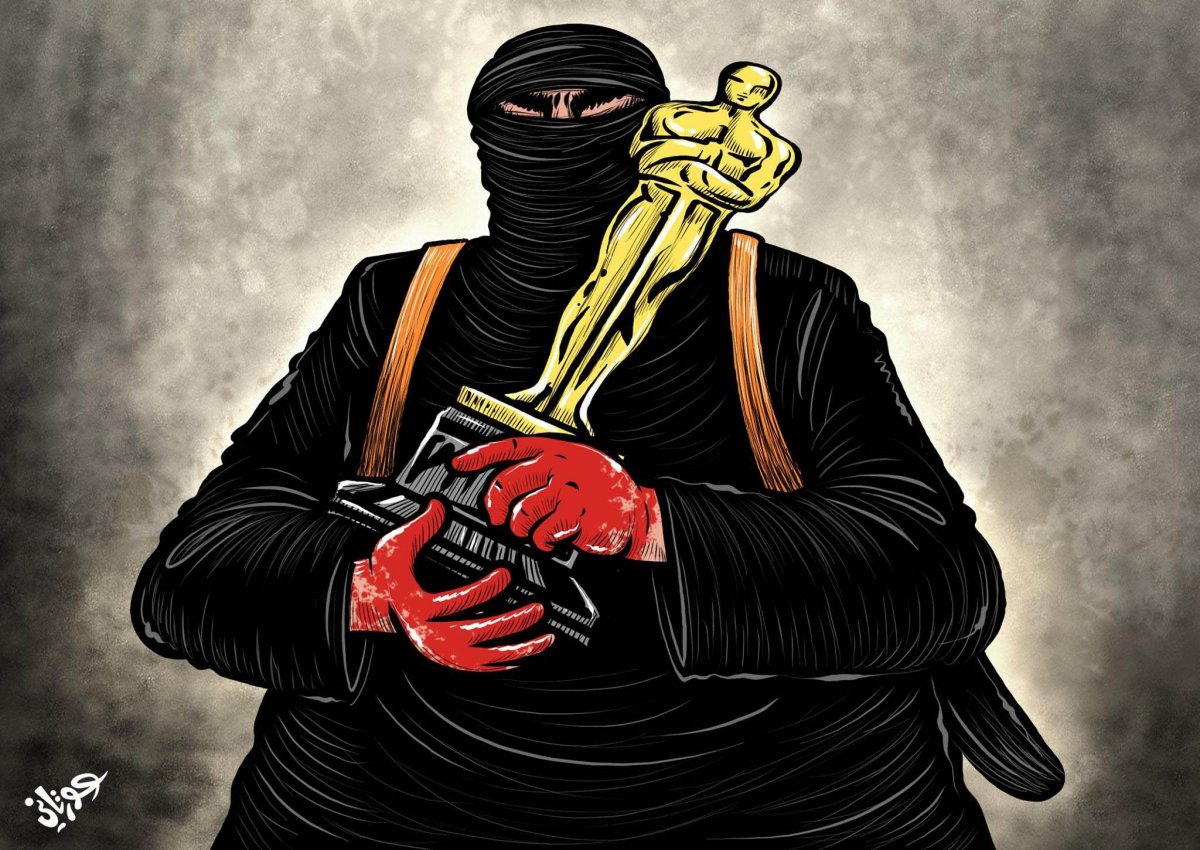
Besides the cartoon arts, plenty of videos satirizing ISIS also have been produced. One of them, entitled "The Prince," dishes out some edgy black humor: It depicts an ISIS "mock Muslim" fighter who secretly smokes cigarettes, drinks wine, flirts on his iPhone and jams to Arabic pop music as he sends off a suicide bomber to detonate himself elsewhere, at a safe distance from his own whereabouts.
Most frequently, cartoonists in the Muslim world berate what they see as ISIS's perversion of Islam and its destruction of cultural heritage in Iraq.
Countless images drive home these two main points in no uncertain terms. For example, one cartoon by Jehad Awartani depicts the bloodstained hands of a hooded and snarling Daesh fighter, who holds a gilt frame at gunpoint (Figure 2). Inside the Baroque trimming are inscribed the words "The Image of Islam" (Surat al-Islam). The cartoon is crystal clear in its message: Islam is depicted as held hostage by its extremist minority.
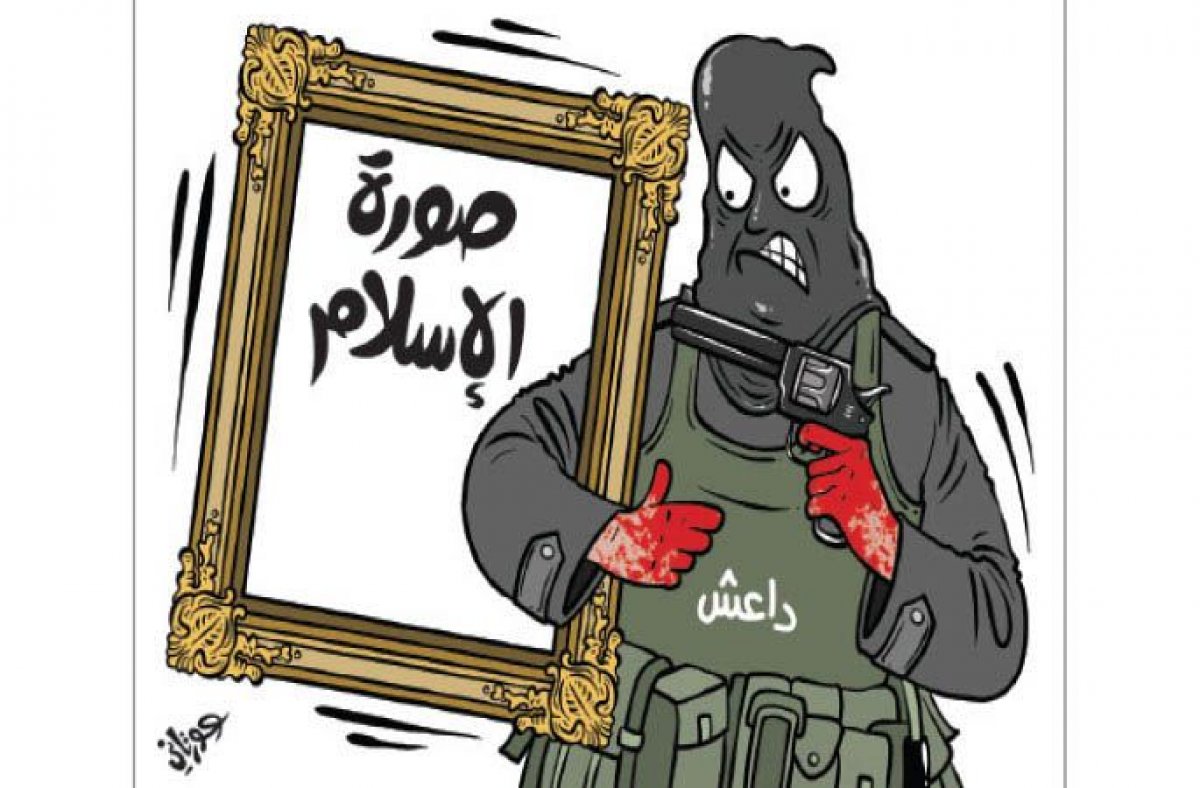
In another cartoon, by the Jordanian artist Osama Hajjaj, Daesh fighters are shown on the verge of decapitating five kneeling men (Figure 3). Each victim has a part of his body outlined in orange, providing the five Arabic letters that spell out the word "Islam." Through his cartoon commentary, Hajjaj shows the collective embodiment of Islam as a lamb to slaughter under ISIS's violent subjugation.
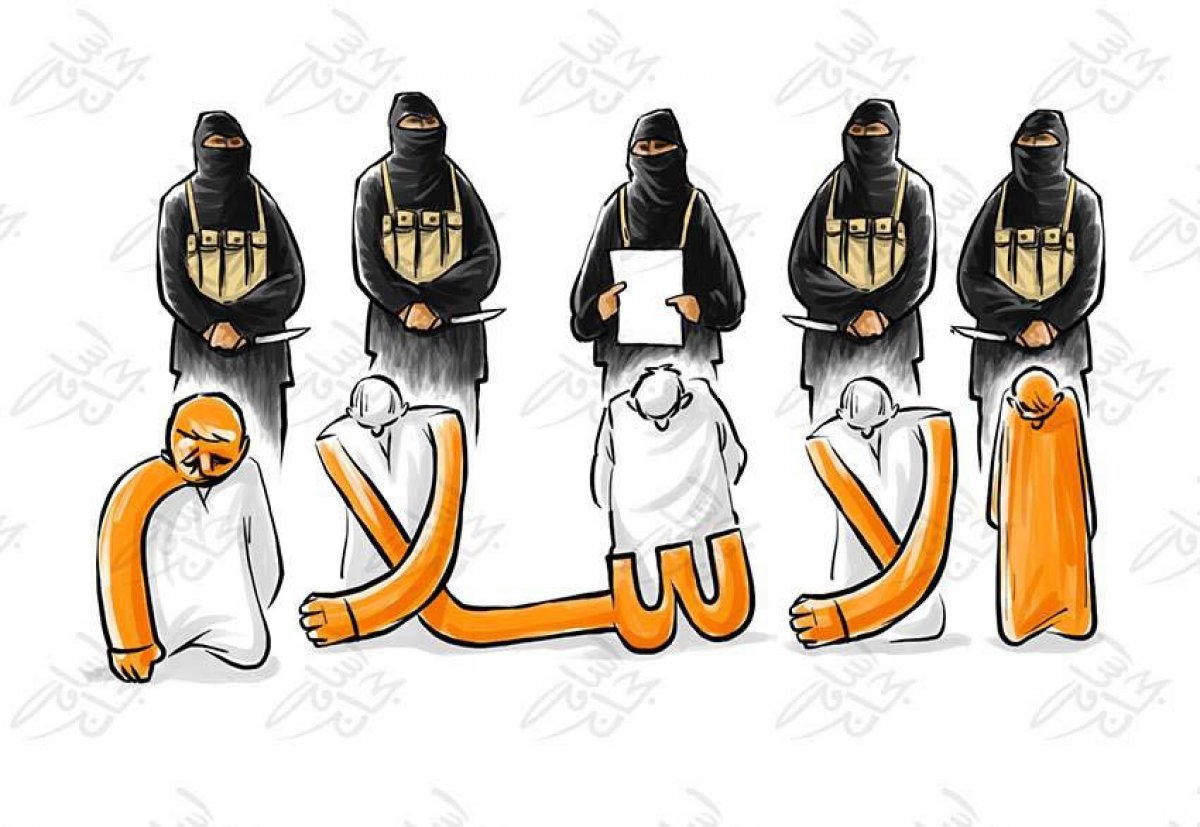
What is also particularly powerful about this cartoon is the fact that it provides a picture of the slaughter of Muslims which otherwise has gone missing in European and American media coverage. While news of the beheading of James Foley, Steven Sotloff, David Haines and Kenji Goto garnered international attention, there has been nary a peep about the thousands of Muslim civilians who have been killed by ISIS over the past two years.
Quite sadly, this overwhelming silence and lack of interest make it appear as if these human lives simply do not count, numerically or morally.
Muslim cartoonists also have expressed outrage over ISIS's recent ransacking of the Mosul Museum and its bulldozing of ancient sites, most especially the Assyrian city of Nimrud. While ISIS members has been keen to make videos of their "iconoclastic performances" go viral for a target Euro-American viewership, most often the antiquities that fall into their hands are sold on the black market and even eBay, thus providing them with much needed monies to fund their operations.
Various cartoonists across the Middle East analogize this horrific loss of artistic heritage to cultural terrorism and assassination. For instance, Awartani uses the decapitation motif to show Daesh fighters slitting the throats of "humanity" and the "heritage of humanity," the latter sporting the head of an Assyrian Lamassu sculpture (Figure 4). While these colossal human-headed winged lions can be found in international museums, those guarding the entrance of a palace at Nineveh have been obliterated with drama, showmanship and the thumping cadence of jack and sledgehammers.
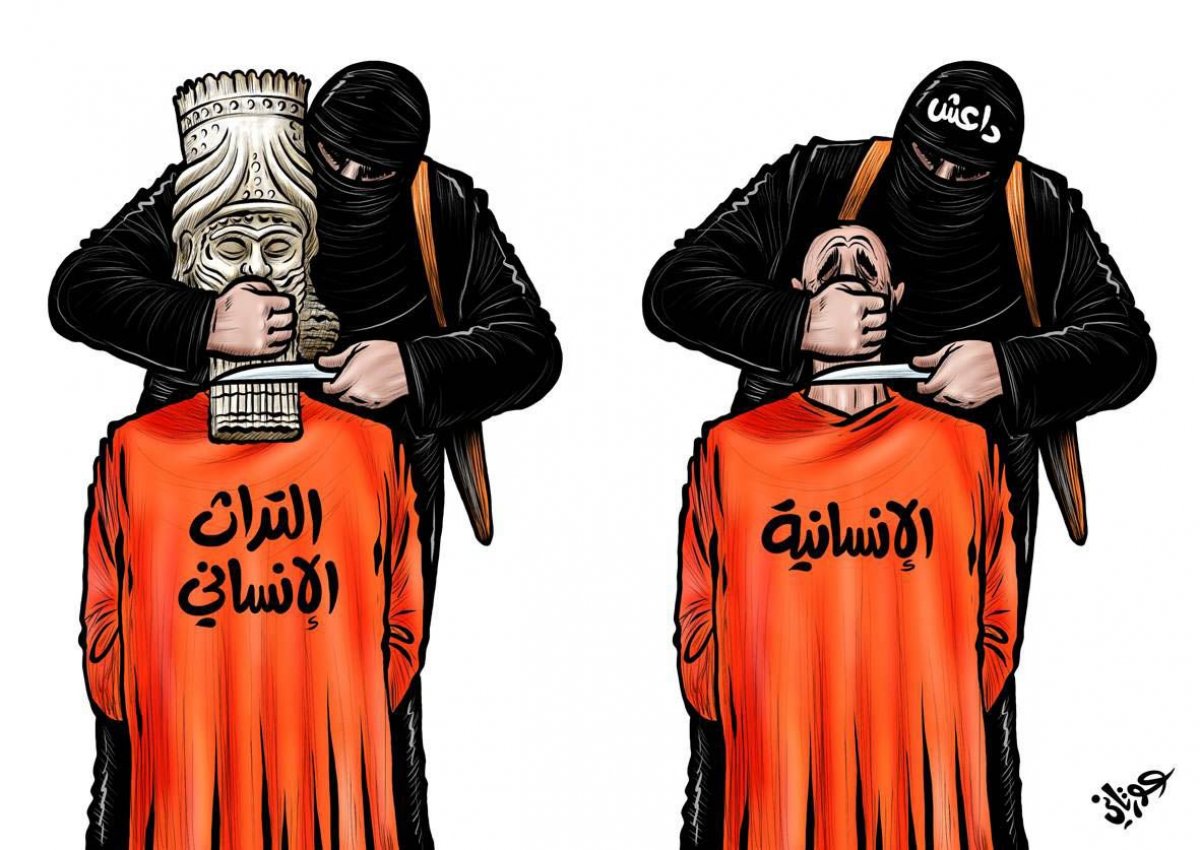
Further bemoaning ISIS's cultural carnage, the Iranian cartoonist Mehdi ("Amo") Rasooli shows two self-satisfied fighters carrying a beheaded Lamassu, whose hoofs are tied to a pole as if it were a lamb about to be slaughtered on the Islamic "Feast of Sacrifice" known as Eid al-Adha (Figure 5). The visual commentary offered here criticizes the sacrifice of cultural heritage in Iraq while also mocking ISIS's confusion between animate life and inanimate objects.

While such a "confusion" might be interpreted as savagery or ignorance, it nevertheless is enacted by ISIS as a strategic articulation of extreme "otherness" within the realms of art, culture, politics, history and religion.
These ideological contra-positions within cartoons and rhetoric are jarring, in large part because the battle over who is allowed to define and represent Islam rages on today. Within the Islamic world, the condemnations of ISIS and radical Islam are fierce and ubiquitous. These, however, largely go unnoted in Euro-American media, most likely because they do not make for sensational stories.
As banal as it may seem, it is important to note that, despite all the violence and loss, the vast majority of Muslims continue to peacefully embody and practice the Islamic faith while also laboring to preserve the world's artistic and cultural heritage in the Middle East. Among them, cartoonists consistently take ISIS to task through their astute commentary on harrowing circumstances.
Instead of launching competitions in vitriol and divisiveness, as some may choose to, they instead invite us to join them so that we may laugh—rather than cry—at our collective sorrow and make it stop (Figure 6). And that is most certainly an intelligent, creative and civilized way to move forward.
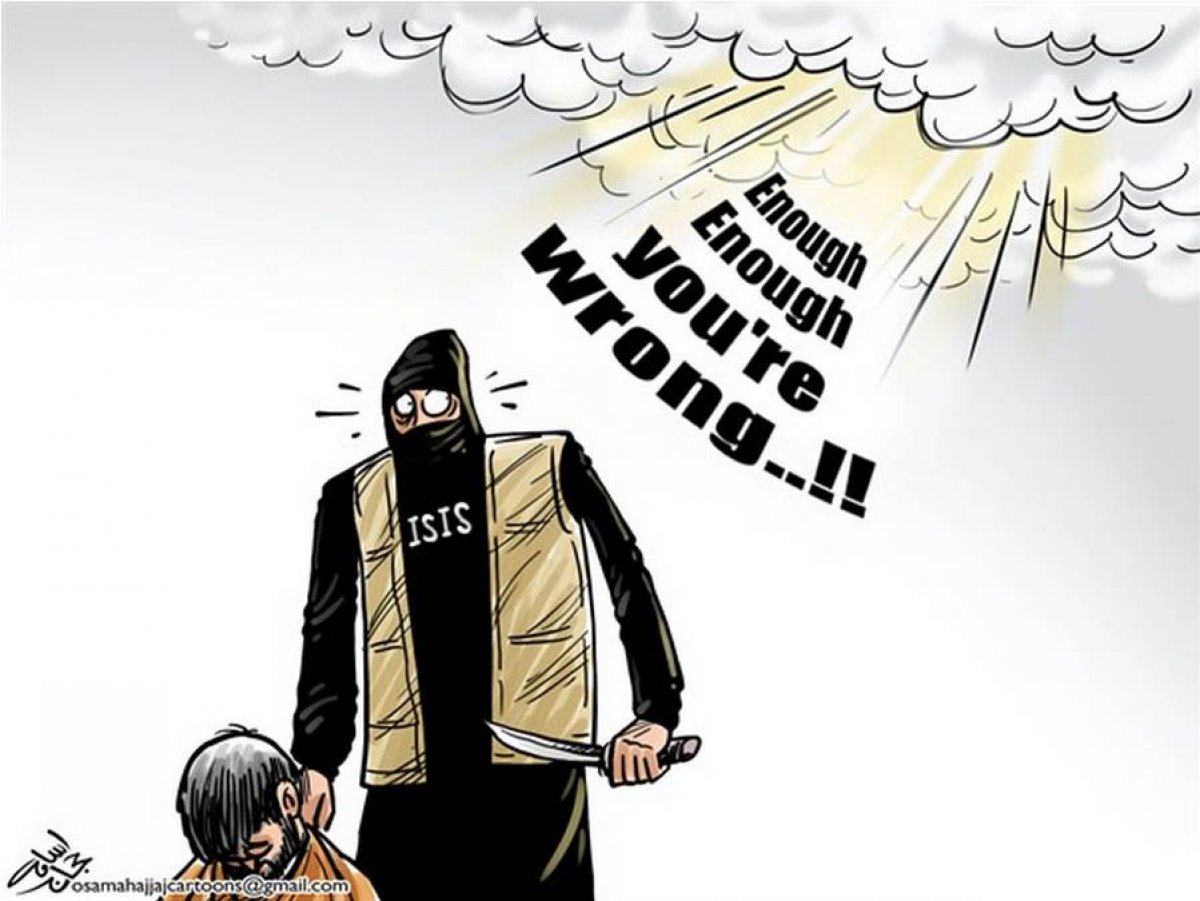
Christiane Gruber is associate professor and director of graduate studies at the University of Michigan. Her primary field of research is Islamic book arts, paintings of the Prophet Muhammad, and Islamic ascension texts and images, about which she has written two books and edited a volume of articles. She also pursues research in Islamic book arts and codicology, having authored the online catalog of Islamic calligraphies in the Library of Congress as well as edited the volume of articles, The Islamic Manuscript Tradition. Her third field of specialization is modern Islamic visual culture and post-revolutionary Iranian visual and material culture, about which she has written several articles. She also has co-edited two volumes on Islamic and cross-cultural visual cultures. She is currently writing her next book, titled The Praiseworthy One: The Prophet Muhammad in Islamic Texts and Images.
Uncommon Knowledge
Newsweek is committed to challenging conventional wisdom and finding connections in the search for common ground.
Newsweek is committed to challenging conventional wisdom and finding connections in the search for common ground.
About the writer
To read how Newsweek uses AI as a newsroom tool, Click here.




